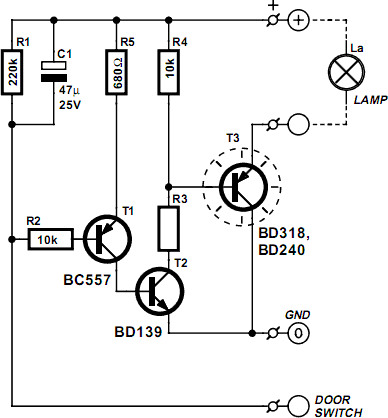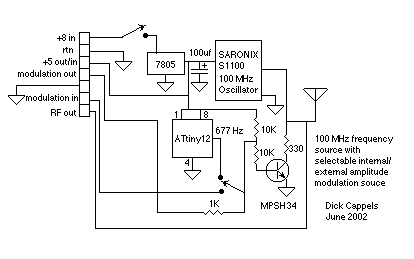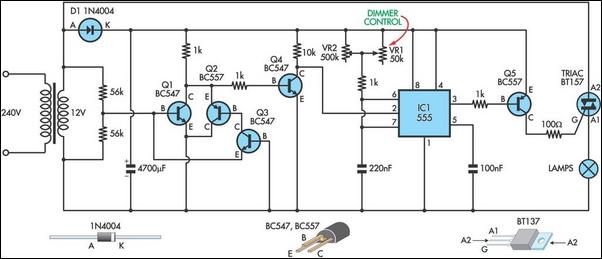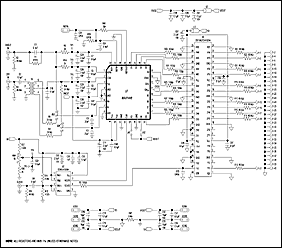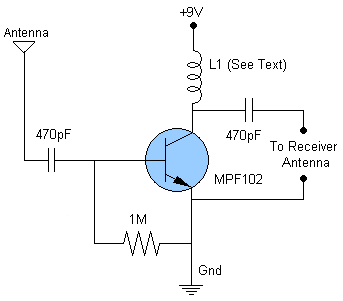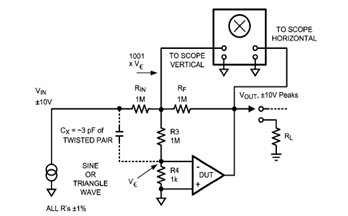
Tin Can Waveguide WiFi Antenna
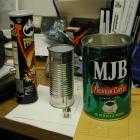
Got no dough for a commercial WiFi antenna? Looking for an inexpensive way to increase the range of your wireless network? A tin can waveguide antenna, or Cantenna, may be just the ticket. This design can be built for under $5 U.S. and reuses a food, juice, or other tin can.
The Cantenna is a simple yet effective DIY antenna designed to enhance the range of wireless networks, particularly WiFi. The fundamental principle behind this design is based on waveguide technology, where the tin can acts as a waveguide that directs the radio frequency (RF) signals.
To construct a Cantenna, the following materials are typically required:
- A clean, empty tin can (e.g., a soup can or a coffee can)
- A coaxial cable with an appropriate connector for the wireless device (usually an N-type connector)
- A drill or a sharp tool to create an opening in the can
- A ruler or measuring tape
- Optional: paint or tape for aesthetic purposes
The construction process involves the following steps:
1. **Preparation of the Can**: Remove any labels and clean the can thoroughly. It is essential to ensure that the can is free of any contaminants that may affect performance.
2. **Determining Dimensions**: The length of the can and the diameter are critical parameters. For optimal performance, the can's length should be approximately one-quarter of the wavelength of the desired frequency, which for typical WiFi (2.4 GHz) is about 31 mm. The diameter of the can should be around 10 cm to effectively capture the signals.
3. **Creating the Aperture**: Using a drill, create a small hole in the side of the can that is aligned with the center. This hole will accommodate the coaxial cable. The position of the hole should be determined based on the calculated dimensions for the specific frequency being targeted.
4. **Installing the Coaxial Cable**: Insert the coaxial cable through the hole, ensuring that the inner conductor is positioned at the correct depth from the open end of the can. The outer shield should be connected to the can, which acts as a ground.
5. **Final Assembly**: Ensure that all connections are secure and that the can is positioned in a way that maximizes exposure to the intended signal direction.
6. **Testing and Adjustments**: Once assembled, the Cantenna can be connected to the wireless device. It is advisable to test the antenna's performance in various orientations and locations to determine the best setup for maximum signal strength.
The Cantenna is a cost-effective solution for individuals seeking to extend their wireless network coverage without the need for expensive equipment. However, caution is advised regarding the safety and compatibility with existing wireless devices. It is recommended to monitor the performance and ensure that the antenna does not interfere with the device's operation.Got no dough for a commercial WiFi antenna? Looking for an inexpensive way to increase the range of your wireless network? A tin can waveguide antenna, or Cantenna, may be just the ticket. This design can be built for under $5 U.S. and reuses a food, juice, or other tin can. I am not an electrical engineer, nor do I have access to any fancy test equipment. I`ve built some antennas that worked for me and thought I would share what I learned. I have no idea if this is safe for your radio or wireless network equipment. The 🔗 External reference
The Cantenna is a simple yet effective DIY antenna designed to enhance the range of wireless networks, particularly WiFi. The fundamental principle behind this design is based on waveguide technology, where the tin can acts as a waveguide that directs the radio frequency (RF) signals.
To construct a Cantenna, the following materials are typically required:
- A clean, empty tin can (e.g., a soup can or a coffee can)
- A coaxial cable with an appropriate connector for the wireless device (usually an N-type connector)
- A drill or a sharp tool to create an opening in the can
- A ruler or measuring tape
- Optional: paint or tape for aesthetic purposes
The construction process involves the following steps:
1. **Preparation of the Can**: Remove any labels and clean the can thoroughly. It is essential to ensure that the can is free of any contaminants that may affect performance.
2. **Determining Dimensions**: The length of the can and the diameter are critical parameters. For optimal performance, the can's length should be approximately one-quarter of the wavelength of the desired frequency, which for typical WiFi (2.4 GHz) is about 31 mm. The diameter of the can should be around 10 cm to effectively capture the signals.
3. **Creating the Aperture**: Using a drill, create a small hole in the side of the can that is aligned with the center. This hole will accommodate the coaxial cable. The position of the hole should be determined based on the calculated dimensions for the specific frequency being targeted.
4. **Installing the Coaxial Cable**: Insert the coaxial cable through the hole, ensuring that the inner conductor is positioned at the correct depth from the open end of the can. The outer shield should be connected to the can, which acts as a ground.
5. **Final Assembly**: Ensure that all connections are secure and that the can is positioned in a way that maximizes exposure to the intended signal direction.
6. **Testing and Adjustments**: Once assembled, the Cantenna can be connected to the wireless device. It is advisable to test the antenna's performance in various orientations and locations to determine the best setup for maximum signal strength.
The Cantenna is a cost-effective solution for individuals seeking to extend their wireless network coverage without the need for expensive equipment. However, caution is advised regarding the safety and compatibility with existing wireless devices. It is recommended to monitor the performance and ensure that the antenna does not interfere with the device's operation.Got no dough for a commercial WiFi antenna? Looking for an inexpensive way to increase the range of your wireless network? A tin can waveguide antenna, or Cantenna, may be just the ticket. This design can be built for under $5 U.S. and reuses a food, juice, or other tin can. I am not an electrical engineer, nor do I have access to any fancy test equipment. I`ve built some antennas that worked for me and thought I would share what I learned. I have no idea if this is safe for your radio or wireless network equipment. The 🔗 External reference
